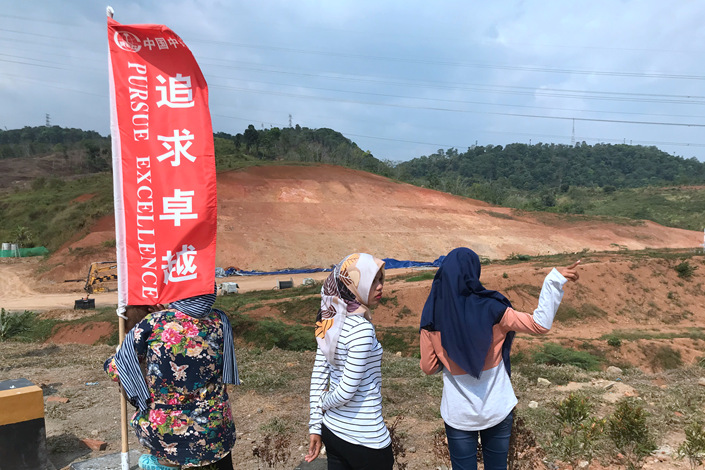The Rise of Hamas and Likud into Power and the Future of Israeli-Palestinian Peace Talks
As
one of the most important political party in Palestine, the rise of Hamas into
power has truly changed Palestinian political landscape into its current shape.
Unlike Fatah who seek to break Palestine from Israel’s rule by pursuing peace
talks, Hamas seek to liberate the State of Palestine by using act of violence
as its vehicle, which in turn has made them being categorized as a terrorist
organization by many countries across the globe, most notably from those in the
West (Council on Foreign Relations, 2014). Other than that, major differences
between Hamas and Fatah might also including its relationship with religion, in
which Fatah proclaim themselves as more secular-leaning whereas Hamas proclaim
themselves as the guardian of Islamic values in the Palestinian society and
want to turn Palestine into an Islamic state that was governed under the
principle of Sharia Law (Schanzer, 2010).

This picture was taken from https://www.bbc.com/news/newsbeat-44124396
This
kind of condition that has been aforementioned above has swing the general
pendulum of Palestinian politics into more on the right side, and has also led
into the resurgence of Likud Party in Israel, which breaks Israel’s strong
leftist traditions (Haaretz, 2015). In this particular essay, I would argue and
highlighted that the rise of right-leaning party both in Palestine and Israel
might hinder the development of peace, especially within the greater context of
Israeli-Palestinian Peace Process.
Based on historical perspective,
Hamas or also known as ‘Islamic Resistance Movement’ was founded by Sheikh
Ahmed Yassin, one of the most influential Palestinian Islamic preacher during
the year of 1987 as a ‘reactionary’ right-leaning, Islamist political force.
However, the history of Hamas itself might also be traced way further, as far
as the year of 1967 during the period of Six Day War. According to Encyclopedia Britannica (2019),
the ideological basis and motives of Hamas was inspired by an Egyptian Islamic
movement called the Muslim Brotherhood, otherwise known as Ikhwanul Muslimin or ‘the Ikhwan’
which emphasizing on stricter interpretation of Islamic law and tenets. Born
out of frustration of many of Palestine’s political limbo, the organization
strives to spread their idea in mosque and university across the country most.
This condition was more subtle in Gaza than in the West Bank, which might
partially explain the current political splits that has torn the governmental
system in Palestine until nowadays.


This picture was taken from https://www.timesofisrael.com/idf-official-hamas-ready-for-fresh-hostilities-with-israel/
As
a political organization, Hamas strive to the liberate Palestine by using the
means of violence, which include car bombing, attacking civilian target,
suicide bombing, and many more. This kind of action has led them being
classified as a ‘foreign terrorist organization’ by the government of United
States since 1997 until today (Council on Foreign Relations, 2014). This condition also led them into clash with
Fatah, which prioritize peace talks as the main means of creating an
independent Palestinian state.
Despite being known and
designated as a terrorist organization, Hamas also widely known for its social
charity work, which in turn increase their popularity from Palestinian
plebeians and commoners. Their works include the construction of public
facilities such as schools, mosques, and also healthcare center such as
hospitals. According to Alijla (2016), the donors for this kind of construction
were coming from the countries of the Gulf and from wealthy Arabic individuals.
A worth-noting fact regarding Hamas work on charity issues is that they manage
to run their activities by anti-corruption approach, which resulted into an
increasing efficiency, something that many NGOs might only dream off (Fisher,
2003).
This perception of Hamas’s ‘cleanliness’ has
resulted into an increasing trust by the people of Palestine, especially in the
context of rampant corruption that has been severely reducing the effectiveness
of Palestinian government. On one hand, this kind of charity conducted by Hamas
has been an effective tool for them to be utilized to gather support from the
masses, but in other way around, its strong perception with terror and violence
has driven out international support and sympathy away from them.


Just like Hamas that loves to
portray themselves as the ‘guardian’ of the people, Israel’s Likud Party also
like to brand itself as ‘protector’ of Israeli’s national values, the one that
was built on the values of Judaism. The rise of Likud into mainstream Israeli
political stage is something that needs to be observed clearly, and in some
ways might resemble the way that Hamas did in Palestinian politics. According
to BBC (2013), Likud’s strongest competitor might be the left-leaning Labor
Party, or also known as ‘Ha’avoda’ in Hebrew. In these recent years however,
the power of Labor Party has going down significantly especially with the rise
of right-leaning parties such as Likud into Israel’s political stage.
According
to historical perspective, Likud was founded in 1973 and was constructed on the
basis of right-wing policies that include a strong sense of nationalist
sentiments. This has led into their strong sentences against the creation of
Oslo Accord in 1993. In these recent years, they have been ‘forced’ by other
power such as the US to acknowledge the existence of the State of Palestine and
to accept the policy of two-state solution (BBC, 2013). As of 2019, Likud has
collaborated with other right-leaning party called Yisrael Beitanu in order to
maintain their power in the government. As a matter of fact, the current PM of
Israel which is Benjamin Netanyahu come from Likud Party and has been in charge
of that position since the year of 2009.


This picture was taken from https://www.timesofisrael.com/netanyahu-tells-party-well-continue-to-lead-israel-for-many-years-to-come/
With the rise of right-leaning
parties in both of Israel and also Palestine, I would argue that the creation
of peace process for the nearby future would be hindered even way furthermore.
This was due to the nature of both of these political parties that is Hamas and
Likud, to prioritize their own goal rather than what their predecessor such as
Fatah and Labor has did in 1993 during the Oslo Accord. As a matter of fact,
Hamas has in many times stated their rejection in the concept of two-state
solution, and even when they do so, they refuse to recognize the sovereignty of
the State of Israel (DW.com, 2019). Likud on the other hand has also reject the
concept of two-state solution in a soft yet subtle approach that is continuing
the policy of illegal settlement’s construction in Palestinian territory of
West Bank (Cook, 2018). Throughout these recent years, both of these parties
have ‘consistently’ refuse to create a peace talks or negotiations among them
which resulted in a never-ending political limbo between Israel and Palestine.
In order to pave a way for the
future Israeli-Palestinian peace process, both of these ruling parties needs to
reduce their own ‘ego’ and rethinking about their current political stance. On
one hand, this kind of approach might help to address the increasing tension
between both of these countries but in other way around might damage the future
of both of these parties, especially when talking about voter reduction from
their electoral bases that was mainly compromise of Conservatives. Thus as a
conclusion, even though both parties can actually decide to settle down for
peace, their main interests of keeping ‘identity politics’ among their voters
would be on the forefront of their priority first and foremost. And as a
result, the future of Israeli-Palestinian would remain in the status quo, which is in a state of
political deadlock between both of Israel and also Palestine.
References
Alijila, A. (2016). The Unbreakable Relationship: Hamas
and the Humanitarian Aid in Gaza. [online] Huffpost.com. Available at: https://www.huffingtonpost.com/abdalhadi-alijla/the-unbreakable-relations_b_11727200.html
[Accessed 17 Mar. 2019].
BBC News. (2013). Guide to Israel's political parties.
[online] Available at: https://www.bbc.com/news/world-middle-east-21073450
[Accessed 17 Mar. 2019].
Cook,
S.A. (2019). Israel Moves to Annex the West Bank—This Is How the
Two-State Solution Dies. [online] Council on Foreign Relations. Available
at:
https://www.cfr.org/blog/israel-moves-annex-west-bank-how-two-state-solution-dies
[Accessed 17 Mar. 2019].
Council on Foreign Relations. (2019). Hamas. [online] Available at:
https://www.cfr.org/backgrounder/hamas [Accessed 17 Mar. 2019].
DW.com.
(2017). Hamas recognizes 1967 borders, rejects Israel. [online] Available at:
https://www.dw.com/en/hamas-recognizes-1967-borders-rejects-israel/a-38656798
[Accessed 17 Mar. 2019].
Encyclopedia Britannica. (2019). Hamas | Definition,
History, Ideology, & Facts. [online] Available at:
https://www.britannica.com/topic/Hamas [Accessed 17 Mar. 2019].
Fisher, I. (2003). Defining Hamas: Roots in Charity and
Branches of Violence. [online] The New York Times. Available at:
https://www.nytimes.com/2003/06/16/world/defining-hamas-roots-in-charity-and-branches-of-violence.html
[Accessed 17 Mar. 2019].
Haaretz. (2015). Israeli leftists lurking in the shadows |
Opinion. [online] Available at:
https://www.haaretz.com/opinion/.premium-israeli-leftists-lurking-in-the-shadows-1.6909711
[Accessed 17 Mar. 2019].
Schanzer,
J. (2010). Hamas vs. Fatah. New York: Palgrave Macmillan.





